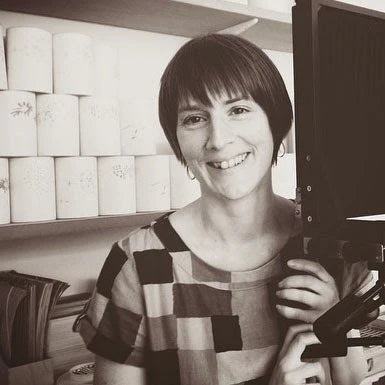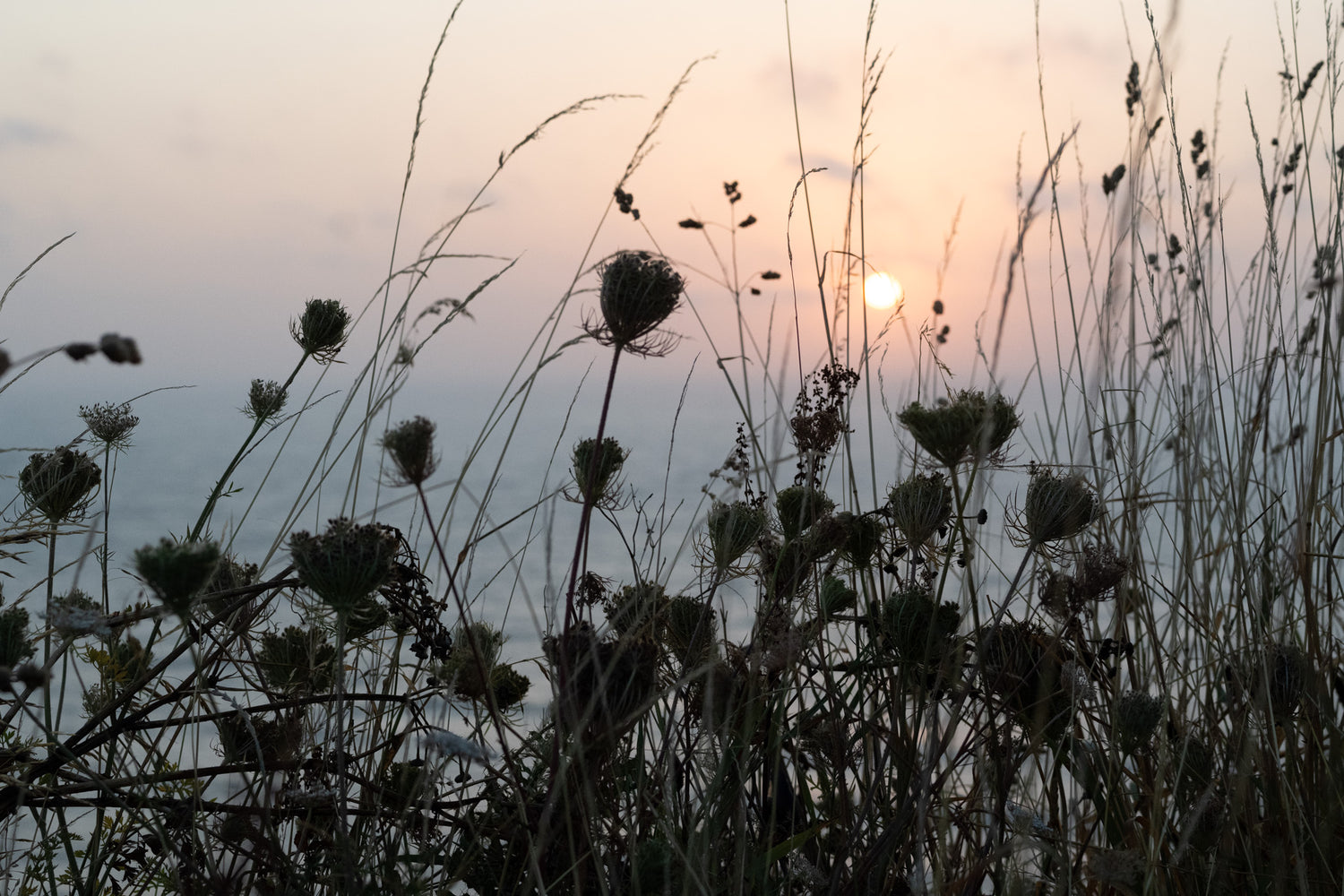
No midsummer holiday would be complete for us without seeking out a wild flower meadow, especially now we have a meadow wedding anniversary to celebrate, so when I knew that we would be staying in Laugharne (which has a special place in my heart) for part of our Welsh road trip I googled 'ancient wild flower meadow, Carmarthenshire' to see what we could see.

Now it's a big county, over 920 square miles and meadow nerds will travel but I squealed with delight when the first one to come up was Whitehill Down on the coast path between Laugharne -Talacharn and St Clears - Sanclêr, as it was only a few miles walk away. Hurrah! It was meant to be.
I was also a little puzzled. I lived in Laugharne for seven and a half years when I was in my twenties and I wandered the countryside a lot. Why had I never stumbled upon this meadow before? I did have small children at the time, maybe it was too far away for their little legs, or maybe my meadow radar wasn't what it is now. It's not like the meadow wasn't there. This is ancient meadow after all.

It was so good to walk on familiar paths and to be introducing Dean to all my old haunts.
"Here's where I saw my first bullfinch."
"I met a little owl on that wall."
"Here's the oak tree I wrote a children's story about".
And even though the trees were 26 years bigger since I saw them last and I was identifying birdsong I didn't know back then everything felt, sounded and smelled just the same. I felt so at home.

We were following the coast path signs which were taking us inland along the River Tâf. The tide was out and the sand was golden. Blackcaps and linnets were singing and the grasses were dancing with butterflies. I remembered well the 'bunny field' as we used to call it and the beautiful Delacorse Farm with it's incredible vegetable garden and the dark tunnely track up the hill with the highest hedgerows, welcome shade from the scorching afternoon sun,

but when the signpost pointed down Brixtarw farm track I realised why I'd never seen the meadow before. There didn't used to be a coast path back then. I'd never been down this lane. This was new ground.
How exciting.

After we had passed a few farmers fields of nothing but grass we wondered if this meadow was going to live up to the Countryfile article I'd read online. But then we spotted a butterfly orchid in the dappled light...

and as the field opened out we saw a whole hillside of them! This had to be the place.

We stayed a while taking it all in


Dean drew some wild roses.

I took some photos

and retreated to the field edges when the sun became too much.

We were going to turn around and walk back after this but there was a possibility that the next field on had more to see so we traipsed up through some trees on a muddy path and then WOW...

THIS was the place. This was what you'd call a down. There was a huge expanse of field stretching on and on and it was rich with flowers and grasses; yellow rattle, orchids, eye bright, meadowsweet, ladies bedstraw, birds foot trefoil, buttercups, sanguisorba, clover, ragged robin, knapweed, scabious. There were redstarts and skylarks calling and stonechats hovering in the distance.

The whole field was jumping and buzzing and fluttering with life.


There some huge white areas that we thought perhaps were meadowsweet or ox eye daisies but on closer inspection we discovered pignut, more than I have ever seen in one place.

It was breathtaking.
Like bluebells are markers of ancient woodland, pignut can indicate ancient grassland.
According to this article, the definition of ancient grassland is:
‘a semi-natural plant community maintained as grassland since 1840, on a site with no history of arable management or agricultural improvement since 1840.’
The UK has sadly lost 97% of it's meadows in the last century. NINETY SEVEN PERCENT! Once a site like this is disturbed it can take at least a hundred years to re-establish. They are incredibly important for wildlife and Whitehill Down supports 170 species at its last count. It is owned by Laugharne Corporation, one of the last surviving medieval corporations in the UK that was established in 1291! They still appoint a new 'Portreeve' each year (who wears a chain of golden cockle shells...how charming) and they, with the 'burgesses' oversee rights to cockle beds on the estuary and 'strangs' which are what these fields are divided into. The burgesses each own a strip of the land but I'm really happy to hear that they work in partnership with Natural Resources Wales to preserve this special habitat.

It's funny to think that this meadow would have been flowering for all of the seven summers that Laugharne was my home and I never knew. All that flowering and flourishing, all that buzzing and fluttering, all that LIFE. I know it would have inspired me then and made its way into my sketchbooks and stories. I'm glad that the new (to me) coast path has been created as it has opened up the landscape.
Laugharne is even more special now. x
If you liked this post you might like to sign up to my Three Somethings, a gentle and joyful moment in your inbox each week. You can also enjoy more of my photos, illustrations and writings in any of my yearly 'something I have noticed' journals which can be purchased here. Thank you x


